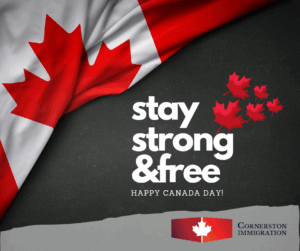
NEW IMMIGRATION RULES 2025
Canada has undergone significant changes to its immigration policies for 2025. These changes are intended to better align the country economically and socially. Here are the current regulations in outline:
Immigration Levels:
Reduced Targets Permanent Residents: The government plans to admit 395,000 new permanent residents in 2025, marking a 20% decrease from 2024’s target of 485,000. This reduction is part of a broader strategy to manage housing affordability and public sentiment.
Temporary Residents: Temporary resident admissions are also set to decline, with targets of 673,650 in 2025, 516,600 in 2026, and 543,600 in 2027. This aligns with the goal of reducing the temporary resident population to 5% of Canada’s total population by the end of 2026.
International Students:
Stricter Regulations Study Permit Cap: A cap on new study permits has been introduced, aiming to control the number of international students entering Canada.
Post-Graduation Work Permit (PGWP):
Eligibility criteria for PGWPs have been tightened, focusing on aligning the program with labor market needs.
Spousal Work Permits: Spouses of international students can now apply for open work permits only if the student is enrolled in a master’s, doctoral, or professional degree program.
Temporary Foreign Workers (TFW):
Policy Adjustments High-Wage Stream: The wage threshold for the high-wage stream of the TFW program has been increased by 20%, raising the minimum wage by $5 to $8 per hour, depending on the province.
Low-Wage Stream Cap: A 10% cap on employers hiring temporary foreign workers under the low-wage stream has been introduced to better align with labor market conditions.
Family Reunification:
Adjusted Targets Spouses, Partners, and Children: The target for admissions in this category is decreasing from 84,000 in 2026 to 61,000 by 2027. Parents and Grandparents: Admissions are being lowered from 34,000 to 20,000 by 2027.
Refugees and Protected Persons:
Reduced Admissions Overall Admissions: The target for refugees and protected persons is decreasing from 72,750 in 2026 to 54,350 by 2027.
Government-Assisted Refugees: Canada remains committed to resettling vulnerable individuals, including human rights defenders and ethnic minorities, despite the overall reduction in numbers.
Provincial Nominee Program (PNP):
Target Adjustments Annual Admissions: The PNP target is set at 55,000 admissions per year for 2025, 2026, and 2027, down from previous targets of 110,000 in 2024 and 120,000 in 2025.
Francophone Immigration:
Increased Focus Outside Quebec: The government aims to increase the proportion of Francophone immigrants outside Quebec to 8.5% in 2025, 9.5% in 2026, and 10% in 2027, up from 7% in 2024.
Asylum and Border Security:
New Legislation Strong Borders Act: A new bill introduced in June 2025 seeks to limit eligibility for asylum claims, particularly targeting individuals based on their method and timing of entry into Canada.
Enhanced Border Measures: The legislation also grants authorities the power to temporarily halt immigration processing under specific conditions, aiming to address issues like the flow of fentanyl and broader border security concerns. These changes reflect Canada’s evolving approach to immigration, balancing economic needs with social considerations. For more detailed information, you can refer to the official Canada Immigration Levels Plan 2025–2027.
Immigration processes now require more careful planning than ever before, the right category selection and very strong document preparation. The role of representatives in this process should not only be to prepare applications; but also to correctly explain the integrity of the process to the applicant and to ensure that decisions are made in line with long-term goals. As Cornerston Immigration, we are happy to be with you in these processes and help you reach your goal


